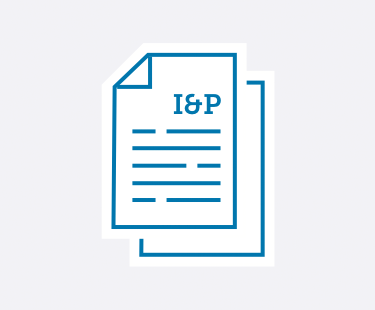

Learn practical strategies to handle emerging trends and leadership challenges in private schools.
No matter if you’re a School Head, Admission Director, Development Director, Board member, or any other private school administrator—Ideas & Perspectives®, ISM’s premier private school publication, has strategic solutions for the pervasive problems you face.
- Tuition not keeping pace with your expenses? In I&P, explore how to use strategic financial planning to create your budget and appropriately adjust your tuition.
- Enrollment dropping off? Discover how to implement the right admission and enrollment management strategies that engage your community—and fill your classrooms.
- Trouble retaining teachers? Learn how you can best support your teachers using ISM’s Comprehensive Faculty Development framework. Your faculty members will become more enthusiastic about their roles—which ultimately improves student outcomes.
- Fundraising campaigns not as successful as you’d hoped? Implement ISM’s practical advice and guidance to build a thriving annual fund, construct an effective capital campaign, and secure major donors—no matter your community size or location.
- Not sure how to provide professional development—for you and your staff? Learn ways to develop and fund a successful professional development strategy. You can improve teacher-centered satisfaction and growth, which in turn strengthens student-centered learning.
- Problematic schedule? You can master the challenges of scheduling with the help of ISM’s practical advice, based on our experience with hundreds of schools and our time-tested theories.
- And so much more.
I&P has shared targeted research, up-to-date insight, and sound theory with school leaders since 1975. More than 8,500 private school decision-makers find the answers to their schools’ administrative and governance matters in our advisory letter. We give you the strategic answers you need.
As an ISM Silver or Gold member, you not only receive issues online and in print 10 times a year, but you have access to 900+ articles in our web archive. Need help? It’s at your fingertips! Learn more and sign up for ISM's membership here.
Search
See the articles from our latest issue of Ideas & Perspectives.
The Head Support and Evaluation Committee: Technicalities
Volume 42 No. 13 // October 16, 2017
In an earlier article, “The Head Support and Evaluation Committee: An Update,” we stated that “the HSEC, as a Board Committee, is primarily concerned with the Board’s strategic objectives and the Head’s responsibilities in their successful achievement.” Consider now the HSEC’s membership, its charge, and its self-evaluation. In staffing the HSEC, the Committee on Trustees should consider the School Head’s position as an executive and as the sole employee of the Board. The Head is responsible for all aspects of the school’s operations, from marketing to teaching Social Studies—without a peer in the school. Use the following chart to ensure the appropriate questions have been asked about the HSEC’s membership.
1. Already a member? Click here to login.
2. Not a member? Click here to become a member.
3. Not sure? We'll help you figure it out.
Review Your School's Capitalization Policy
Volume 42 No. 13 // October 16, 2017
As your school grows in size and complexity, you should review (or establish) accounting policies. Often overlooked is the school’s capitalization policy. A capitalization policy sets guidelines determining which purchases you expense and which purchases you capitalize and then depreciate. It allows your school to match revenues more closely to the expenses associated with the use of those assets. By depreciating an asset, you recognize that it will provide value to your school’s operation for several years. It is easy to determine what constitutes an asset. Land, buildings, utility systems, kitchen equipment, and vehicles certainly qualify. Classroom furniture, computers, and athletic equipment, among others, may also fall into the asset category.
1. Already a member? Click here to login.
2. Not a member? Click here to become a member.
3. Not sure? We'll help you figure it out.
Developing the Annual Administrative Agenda
Volume 42 No. 13 // October 16, 2017
The annual administrative agenda delineates the tasks of the School Head and the Leadership Team (the senior administrators who report directly to the Head). A previous I&P article articulated the process for uncovering the operations responsibility in the Board’s strategic plan/strategic financial plan.* That is not the totality of what the School Head and Leadership Team are accountable for, however. This article, the third in the series, details how to develop the annual administrative agenda.
1. Already a member? Click here to login.
2. Not a member? Click here to become a member.
3. Not sure? We'll help you figure it out.
Primary Drivers of School Outcomes: Insights From Our Executive Leadership and Well-Being Study
Volume 42 No. 12 // September 25, 2017
ISM recently conducted a study of School Head leadership to extend our knowledge of executive leadership and investigate the relationship among our Tier 1 Stability Markers, School Heads’ characteristics and experience, and their well-being/flourishing. In a previous article, we re-introduced our approach to measuring executive leadership and described the general results and conclusions for the study. This article is the second in the series.
1. Already a member? Click here to login.
2. Not a member? Click here to become a member.
3. Not sure? We'll help you figure it out.
School Is Not an Equal Place
Volume 42 No. 12 // September 25, 2017
As School Head, you want every student to be successful. Each student and parent likely comes with the assumption that, if mission-appropriate, the child will “win” at the game of school. The school promises to deliver its mission to all students, not just most of them. As we consider how to deliver the mission with excellence to each student, there is a hidden assumption that the classroom is an equal opportunity environment. Exceptional governance practices (including strategic planning and strategic financial planning) and your actions as School Head in leading faculty are key components of sustaining future success.
1. Already a member? Click here to login.
2. Not a member? Click here to become a member.
3. Not sure? We'll help you figure it out.
Developing the Annual Board Agenda: An Example
Volume 42 No. 12 // September 25, 2017
A previous I&P article provided an overview of the elements of agenda-making for the Board and the School Head. This article, the second in the series, details how to develop the annual Board agenda. The annual Board agenda is one of the focal points in ISM’s data-informed approach to strategic Board structure and function. After your Board of Trustees and senior administration have developed a strategic plan/strategic financial plan that conforms to ISM criteria, you, as Board President, with advice and counsel from the Committee on Trustees (COT), will create an annual Board agenda that sets out the governance-level tasks for the upcoming year. Once the committee chairs have accepted their assignments along with their (written) committee charges and deadlines, the annual Board agenda can be finalized and introduced to the Board as a whole.
1. Already a member? Click here to login.
2. Not a member? Click here to become a member.
3. Not sure? We'll help you figure it out.
Dealing With Hidden Inflation, 2017
Volume 42 No. 11 // September 5, 2017
As a member of the Board of Trustees, School Head, or Chief Financial Officer, you know that a decision to hold tuition flat for a year results in lost ground and places pressure on future budgets. Inflation quietly depletes your real income. But it’s worse than you think. Many schools use the Urban Consumer Price Index (CPI-U) to determine inflation year-to-year.1 However, the CPI-U does not reflect expenses in private schools, and may not reflect your state’s—or even your city’s—true rate of inflation. For example, the annual rates of inflation in San Francisco, San Diego, New York City, Los Angeles, and Washington DC are typically higher than most other cities in the country. Thus, the CPI-U should only serve as a base figure. There are compelling arguments for adjusting your tuition at a rate above the inflation rate in your school’s particular area.
1. Already a member? Click here to login.
2. Not a member? Click here to become a member.
3. Not sure? We'll help you figure it out.
Setting Your Annual Agenda
Volume 42 No. 11 // September 5, 2017
Setting the annual agendas by the Board President and School Head is a key skill for executing the strategic plan/strategic financial plan. No matter how great the strategic plan and strategic financial plan are, they remain inert and powerless unless they are annually tethered to an actionable process. Using annual agendas turns them into the difference-makers that move the school forward.
1. Already a member? Click here to login.
2. Not a member? Click here to become a member.
3. Not sure? We'll help you figure it out.
Healthy Learning Environments for Students
Volume 42 No. 11 // September 5, 2017
As Facilities Director, Business Manager, or Chair of the Building and Grounds Committee in a school that includes young children, your role has changed dramatically over the past decade. You must consider not just the safety and prestige of your buildings, but also its ability to support and impact student learning. In this article, we explore research indicating what effective buildings can do to improve learning environments. This is not about innovative architecture but about the connection between light, sound, temperature, etc., and learning, what is known as internal environmental quality (IEQ).
1. Already a member? Click here to login.
2. Not a member? Click here to become a member.
3. Not sure? We'll help you figure it out.
Well-Being, Executive Leadership, and School Performance
Volume 42 No. 10 // August 14, 2017
Research and experience has led ISM to hypothesize that the School Head’s well-being significantly relates to school outcomes. ISM recently conducted a study of School Heads to extend our knowledge of executive leadership and investigate the relationship among our Tier 1 markers of the ISM Stability Markers®, School Heads’ characteristics and experience, and their well-being. In upcoming I&P issues, we will publish the more nuanced results of this study. The purpose of this article is to re-introduce our approach to the measurement of executive leadership and describe the general results and conclusions. Great leaders can transform a school and take it to new heights, whereas poor leaders can cause great challenges for schools. We have long asserted that, as the executive leader, your “style” does not seem to account for the differences in organizational performance. Nonetheless, you are a critical component of a school’s ability to deliver its mission with excellence. If it is not style, then what are the critical aspects of executive leaders that separate the best leaders from the rest?
1. Already a member? Click here to login.
2. Not a member? Click here to become a member.
3. Not sure? We'll help you figure it out.


